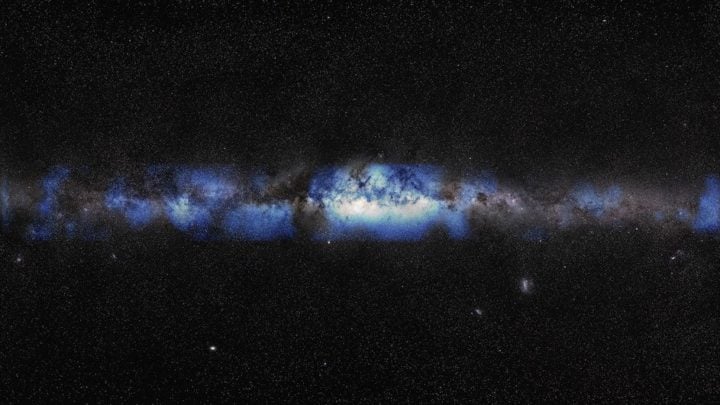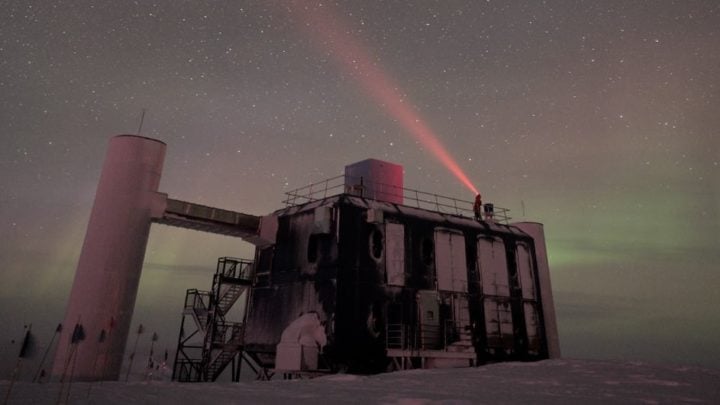IceCube, an Antarctic telescope, has directly observed neutrinos, hard-to-detect subatomic particles, coming from our own galaxy, the Milky Way.
For as long as humans have existed, we’ve been able to see the Milky Way at night by observing the light that radiates from its stars—or, in physics terms, by observing the photons the galaxy’s stars emit.

An artist’s composition of the Milky Way seen with a neutrino lens. Image credit: IceCube Collaboration/U.S. National Science Foundation (Lily Le & Shawn Johnson)/ESO (S. Brunier)
Now, thanks to a scientific experiment led by researchers at universities including Columbia, scientists have for the first time seen the Milky Way in a new way: By observing the high-energy neutrinos it emits.
The new experiment, which was announced this week by the Ice Cube Neutrino Observatory, mapped those neutrinos using a mixture of telescope data and artificial intelligence to create the first-ever subatomic particle map of our own galaxy.
Neutrinos are among the most abundant subatomic particles in the universe. Despite that abundance, they are not visible to the naked eye, and also have no electrical charge and are thus much more difficult to detect than charged subatomic particles like protons and electrons.
The particles interest scientists because better observations of them will offer a deeper understanding of astrophysical phenomena like how stars die, since dying stars emit neutrinos.

A view of the IceCube Lab at the South Pole with a starry sky above. A winterover is seen on the rooftop shining a headlamp light into the sky. Image credit: Marc Jacquart, IceCube/NSF
The IceCube Neutrino Observatory, a cubic-kilometer-sized telescope stationed at the South Pole, was established to study neutrinos directly. Construction of the telescope was completed in 2010.
Zsuzsa Márka, a scientist at the Columbia Astrophysics Laboratory, is the prinicipal investigator of the Columbia University IceCube group. Márka is also a member of the international team that first detected gravitational waves from merging black holes in 2015.
Earlier this week, scientists from outside Columbia made a major advance in the science of gravitational waves, confirming that they had observed a constant murmur of gravitational waves stirring up space-time around us.

Milky Way – artistic impression. Image credit: Pxhere, CC0 Public Domain
The Columbia team’s major contribution to IceCube’s science is in multi-messenger astrophysics, including searches for joint sources of high-energy neutrinos and gravitational waves.
The new finding confirms that the Milky Way is a source of high-energy neutrinos, which scientists had long suspected but never directly detected before. Future research will dive deeper, investigating which specific areas of the galaxy generate neutrinos in order to better understand what kinds of astrophysical events can create them.
“We are excited to be a part of this major discovery, and are eager to take the science further with the IceCube team in the months and years to come,” Márka said.
Source: Columbia University

